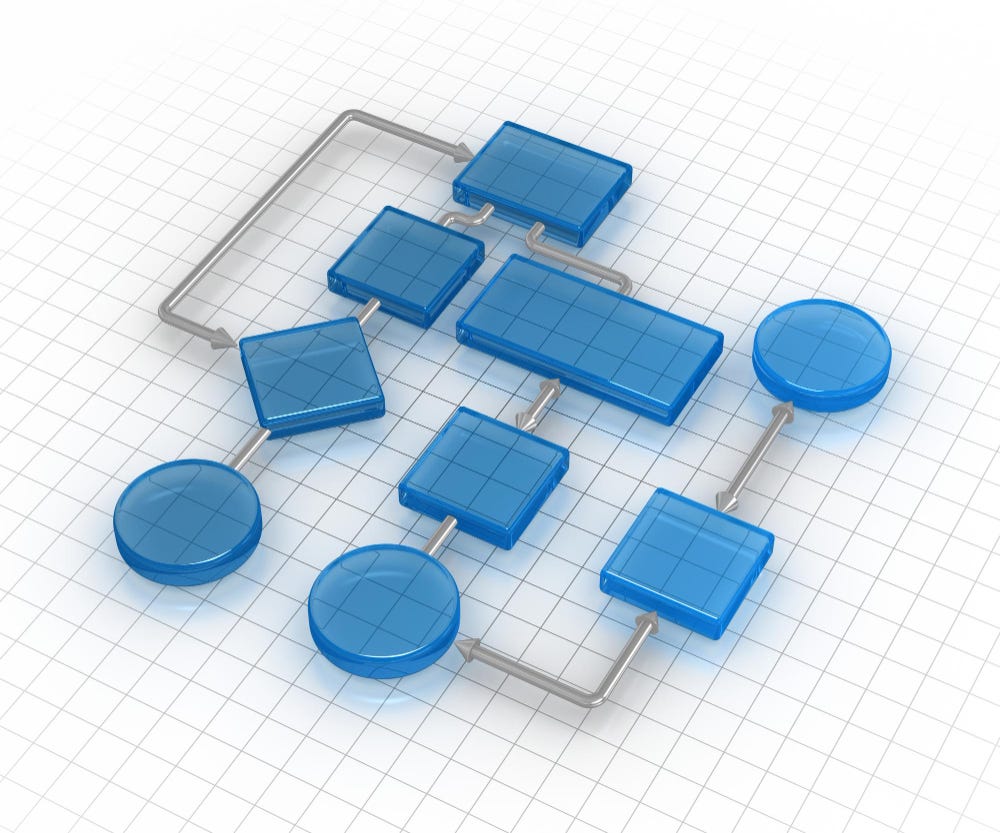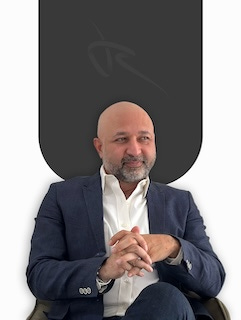Understanding TOGAF: A Practical Guide for Enterprise Architects
Breaking Down TOGAF’s Architecture Development Method (ADM) and Its Role in Enterprise Architecture
Enterprise architecture plays a key role in helping organisations align their technology strategies with business goals. TOGAF (The Open Group Architecture Framework) is one of the most widely used frameworks for structuring and managing enterprise architecture initiatives. It provides a structured approach to designing, planning, implementing, and governing enterprise architecture.
At the core of TOGAF is the Architecture Development Method (ADM), which serves as the engine that drives architectural transformation. ADM guides organisations through a series of well-defined phases, ensuring that business needs translate into effective technology solutions. Unlike other enterprise frameworks that focus on documentation, TOGAF is built around a repeatable process that adapts to both small and large initiatives.
This article will break down TOGAF’s key components, with a particular focus on the ADM, explaining how it supports business-driven architecture decisions. Whether an organisation is modernising its applications, restructuring its data strategy, or improving governance, TOGAF provides a structured methodology to guide the process.
What is TOGAF?
TOGAF (The Open Group Architecture Framework) is a widely used framework that helps organisations design, plan, implement, and manage enterprise architecture. Unlike static models that focus only on documenting an organisation’s architecture, TOGAF is initiative-based, meaning it provides a structured process for driving change and transformation based on business needs.
Many enterprise frameworks focus on classification and organisation, such as The Zachman Framework, which provides a structured way to categorise enterprise architecture artefacts. While Zachman focuses on defining “what” needs to be documented, TOGAF is more about “how” to structure and execute an architectural initiative.
Key Components of TOGAF
TOGAF consists of several components that work together to guide an organisation’s architecture strategy:
1. Architecture Development Method (ADM)
The ADM is the core process of TOGAF, often referred to as its engine. It provides a step-by-step approach to assessing business needs, defining architecture, and implementing solutions. The ADM ensures that enterprise architecture aligns with business objectives while allowing for flexibility in execution.
2. Architecture Content Framework
This component provides a standard structure for organising and managing architectural artefacts. It helps architects reuse building blocks and ensures consistency across projects. The framework includes reference models, templates, and best practices for documenting architecture at different stages.
3. Enterprise Continuum
The Enterprise Continuum acts as a repository of reusable architecture assets, including industry standards, reference models, and previous enterprise solutions. It helps organisations avoid reinventing solutions by providing a structured way to leverage existing knowledge.
4. Architecture Capability Framework
This part of TOGAF focuses on governance, compliance, and project management aspects of enterprise architecture. It defines the roles, processes, and skills required to maintain a strong architecture practice within an organisation.
Together, these components make TOGAF a structured approach for managing enterprise architecture, ensuring that business goals are consistently supported by technology decisions.
The Architecture Development Method (ADM) – TOGAF’s Core Engine
At the heart of TOGAF is the Architecture Development Method (ADM), a structured process that drives enterprise architecture initiatives from concept to implementation. The ADM ensures that business needs are translated into structured, repeatable solutions by guiding organisations through a series of well-defined phases.
Rather than a static documentation approach, ADM is an iterative process that adapts to different business needs, whether it’s a technology transformation, application modernisation, or large-scale enterprise reorganisation. Each phase plays a critical role in shaping and governing the architecture, ensuring alignment with both short-term goals and long-term strategy.
Preliminary Phase – Laying the Groundwork
Before starting an architectural initiative, organisations must establish clear governance, roles, and responsibilities. The preliminary phase sets the foundation for a structured approach to enterprise architecture.
Governance Setup: Defining how architecture decisions will be made and enforced.
Roles & Responsibilities: Assigning key stakeholders, including architects, business leaders, and technology teams.
Customisation: Tailoring TOGAF to fit the organisation’s specific needs, ensuring relevance to the project’s scale and scope.
This phase ensures that architecture efforts align with business priorities and that the right processes are in place to manage change effectively.
Phase A – Architecture Vision
This phase defines the scope of change, key objectives, and expected business outcomes. Without a clear vision, architecture efforts can become fragmented and misaligned with business needs.
Scope Definition: What business functions, systems, or processes will be affected?
Stakeholder Identification: Engaging business leaders, technology teams, and external partners.
Architecture Vision: Establishing a high-level blueprint that outlines the target state.
Buy-In & Approval: Securing stakeholder agreement to proceed with the transformation.
By the end of this phase, the organisation should have a well-defined vision that balances strategic goals with practical execution.
Phases B, C, and D – Defining the Architecture
Once the vision is established, TOGAF breaks down enterprise architecture into three major layers:
Phase B – Business Architecture
The business architecture phase focuses on identifying changes to business workflows, organisational structure, and processes to support the new architecture vision.
Process & Workflow Changes: How will business operations need to adapt?
Organisational Adjustments: Changes in team structures or roles.
Impact on Business Functions: Identifying potential disruptions and mitigations.
Phase C – Information Systems Architecture
This phase defines how data and application components will be structured to support business needs.
Logical & Physical Data Models: Mapping out how information flows across the enterprise.
Database Strategy: Example—migrating from a monolithic database to microservices with independent data stores.
Application Integration: Ensuring systems communicate efficiently, using APIs, event-driven architectures, or middleware.
Phase D – Technology Architecture
This phase focuses on selecting the right technology stack, infrastructure, and deployment models to support the overall architecture.
Technology Selection: Identifying the right hardware, cloud services, and software platforms.
Infrastructure Planning: Ensuring scalability, performance, and security.
Cloud vs. On-Prem Considerations: Determining where workloads should run based on business and technical constraints.
These phases ensure that architecture is aligned at all levels—business, data, and technology—before moving into execution.
Phase E – Opportunities & Solutions
With architecture requirements defined, this phase focuses on developing a roadmap to bring the architecture vision to life.
Roadmap Development: Outlining key milestones, deliverables, and dependencies.
Iterative Planning: Breaking the transformation into manageable phases to reduce risk.
Value-Driven Prioritisation: Ensuring each iteration delivers business value and measurable improvements.
This phase bridges the gap between architecture planning and project execution, ensuring efforts are focused on high-impact initiatives.
Phase F – Migration Planning
Once the roadmap is defined, organisations must plan how to execute the migration efficiently and with minimal disruption.
Risk & Dependency Assessment: Identifying risks and mitigation strategies.
Cost & Resource Planning: Estimating effort, staffing, and financial impact.
Implementation Strategy: Choosing between big bang, phased rollout, or parallel deployment.
A well-planned migration strategy ensures that transformation efforts are delivered on time and within budget while minimising business disruption.
Phase G – Implementation Governance
This phase ensures that the solution aligns with the approved architecture vision and meets the organisation’s expectations.
Acceptance Criteria: Establishing clear metrics for success.
Tracking Progress: Using governance models to monitor implementation.
Issue Resolution: Addressing any constraints, challenges, or unexpected roadblocks.
Fitness Functions: Implementing checks and validations to ensure compliance with architecture principles.
Strong implementation governance ensures that enterprise architecture remains aligned with business goals, even as challenges arise.
Phase H – Architecture Change Management
Enterprise architecture is not static—it must adapt to evolving business and technology landscapes. Phase H ensures that architecture decisions remain relevant and effective over time.
Ongoing Monitoring: Regularly assessing the effectiveness of architecture decisions.
Risk Management: Identifying potential risks in new implementations and addressing them proactively.
Feedback Loop: Creating a structured process for refining and improving architecture based on real-world outcomes.
By continuously managing change, organisations avoid technical debt, improve agility, and ensure long-term alignment with business strategy.
Why TOGAF Matters for Enterprise Architects
Enterprise architecture is more than just selecting the right technology—it’s about ensuring that every decision supports business objectives while maintaining efficiency, scalability, and long-term sustainability. TOGAF provides a structured approach to managing IT transformation and reducing risks associated with large-scale architectural changes.
Aligning Architecture with Business Goals
One of the biggest challenges in enterprise architecture is ensuring that technical solutions support business strategy. TOGAF provides a clear framework to guide architectural decisions so that IT investments contribute directly to business outcomes. By using TOGAF’s Architecture Development Method (ADM), architects can align technology, processes, and business needs in a structured way.
A Repeatable Process for IT Transformation
Many organisations struggle with inconsistent architecture practices, leading to inefficiencies, duplicated efforts, and misaligned solutions. TOGAF establishes a structured and repeatable process for managing enterprise architecture, ensuring that teams follow a clear methodology when designing and implementing IT solutions. This consistency helps businesses scale effectively while reducing complexity.
Reducing Risk in Large-Scale Architectural Changes
Without a structured framework, IT transformation projects can lead to unexpected costs, delays, and operational disruptions. TOGAF reduces these risks by:
Defining clear phases for planning and execution.
Establishing governance structures to track progress and ensure compliance.
Identifying dependencies and risks early in the process.
By following a proven methodology, organisations can avoid common pitfalls that often arise in large-scale system changes.
Ensuring Consistency and Scalability
As organisations grow, maintaining consistency across multiple departments, teams, and technology stacks becomes a challenge. TOGAF provides:
Standardised architecture practices that can be reused across projects.
A framework for integrating new technologies without disrupting existing systems.
A structured approach to scaling IT infrastructure while maintaining control.
By applying TOGAF principles, organisations can ensure that their architecture evolves in a controlled and efficient manner, without compromising on long-term stability.
Conclusion
TOGAF plays a key role in enterprise architecture, providing organisations with a structured approach to aligning technology with business goals. By offering a clear methodology for planning, designing, and implementing architecture, TOGAF helps businesses manage IT transformation efficiently while reducing risks and maintaining consistency.
At the heart of TOGAF is the Architecture Development Method (ADM), a step-by-step framework that guides organisations through the entire architecture lifecycle. From setting the foundation and defining the vision to governance and continuous improvement, ADM ensures that enterprise architecture is not just a one-time effort but an ongoing process that adapts to changing business needs.
For enterprise architects, adopting TOGAF principles provides a structured way to manage complexity, improve IT alignment, and enhance governance. Whether an organisation is modernising legacy systems, transitioning to microservices, or implementing large-scale IT changes, TOGAF offers the guidance needed to make informed, strategic decisions.
By integrating TOGAF into enterprise architecture practices, businesses can create scalable, efficient, and well-governed IT environments that support long-term success.
For those looking to deepen their expertise in enterprise architecture and elevate their projects through strategic communication, I invite you to connect with me. As an experienced Enterprise Architect and AI consultant, I offer tailored guidance and insights that can transform your architectural practices. Visit my social media profiles to learn more about my services and how I can help you achieve excellence in your architectural endeavours. Let’s build robust, effective solutions together and drive success in your next project. X(twitter), Instagram.
For more articles on ethical AI, Architecture, leadership strategies, and staying technically relevant, follow me on LinkedIn or subscribe to my blog for regular updates.



